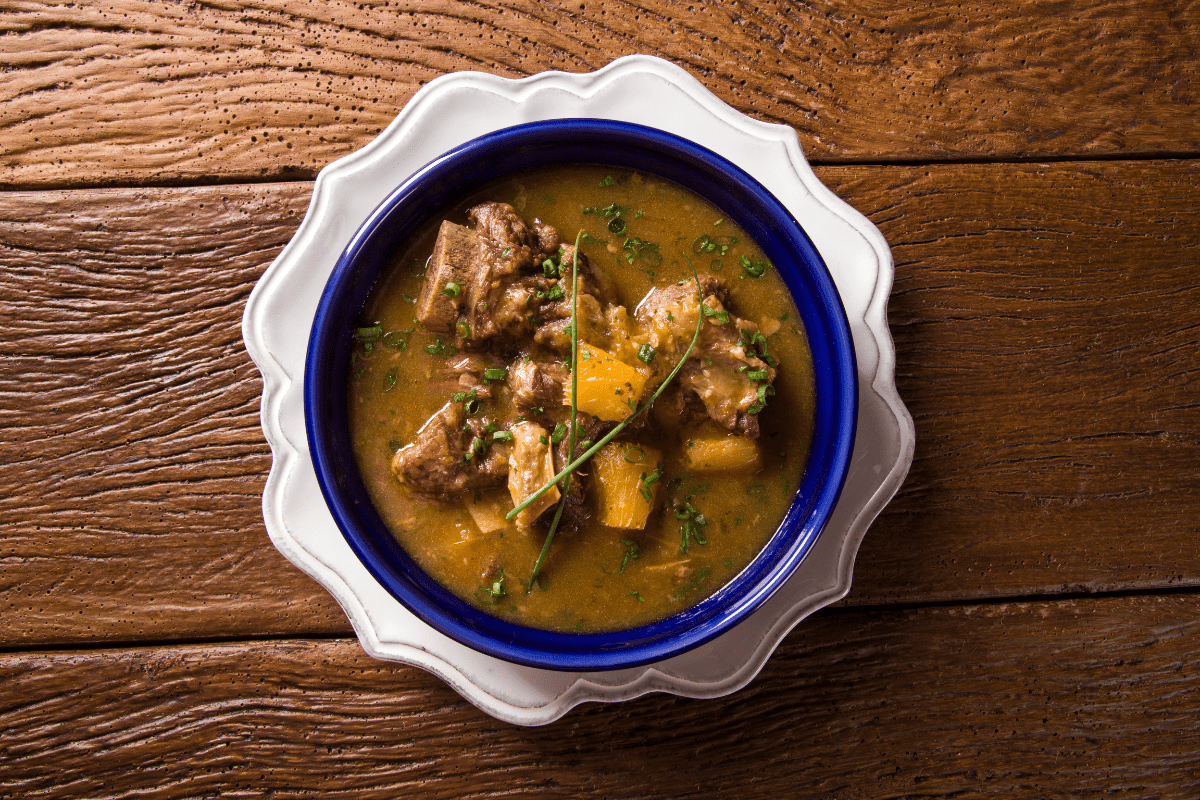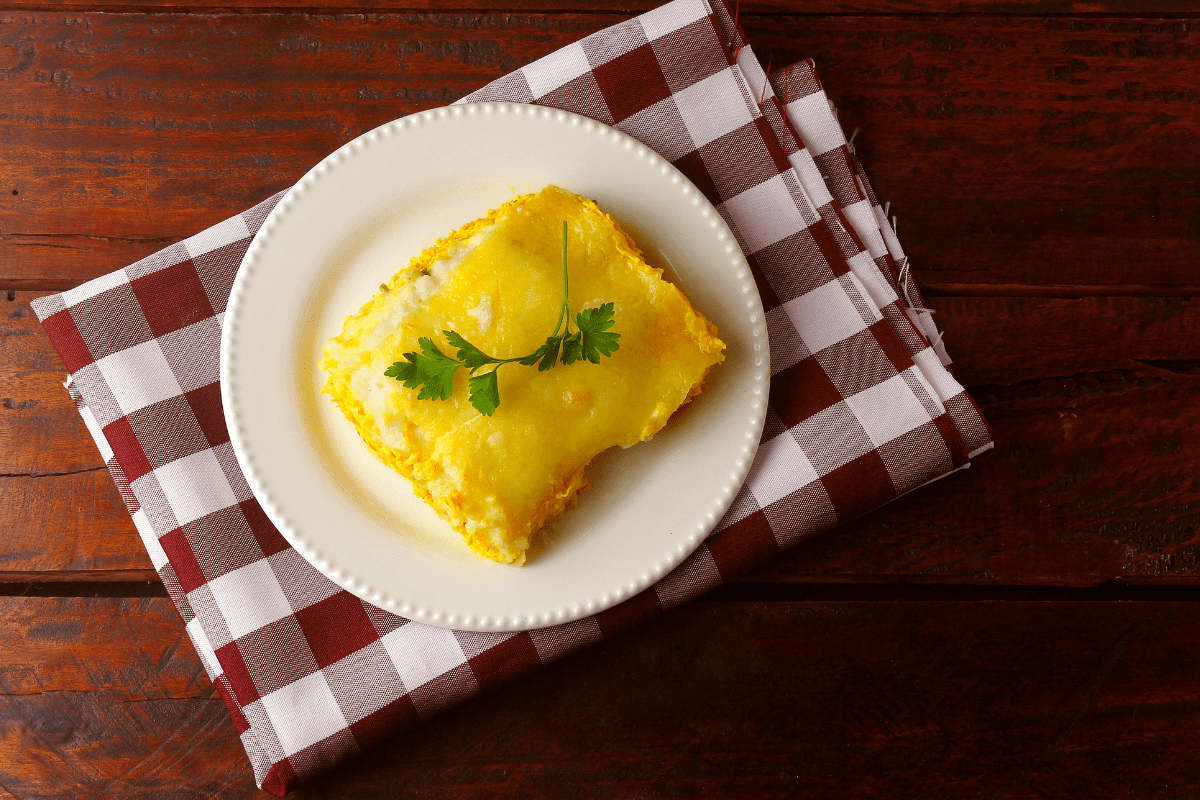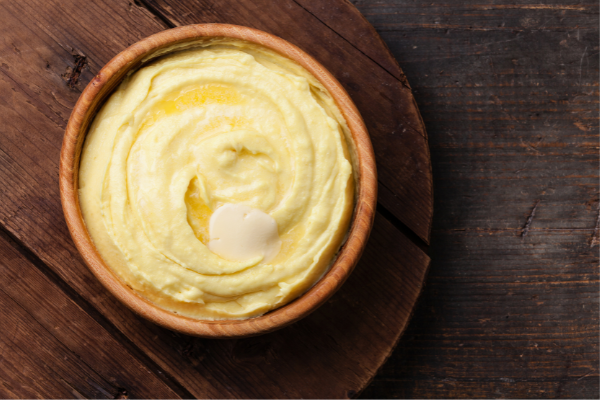Brazilian Beef Stew With Yuca (Vaca Atolada)
This Brazilian version of short rib stew slow-simmers the meat with earthy yuca in a savory sauce of red wine, garlic, fresh herbs, and stock. It is a perfect meal for a cold winter day and requires nothing more than throwing ingredients into a pot and letting the flavors meld.
Origin of Brazilian Short Rib Stew
Vaca atolada translates to “cow stuck in the mud.” The name is thought to have originated with the dish itself, which was probably eaten in a much grittier form by Portuguese explorers searching for gold in Minas Gerais (late 17th century).
At that time, the explorers survived off beef preserved in a thick layer of fat. During thunderstorm season, any cattle being herded along with the group would, quite literally, become stuck in mud. The story goes that the explorers would use the time to hunker down and enjoy a stew of the preserved beef.
A less whimsical but no less plausible explanation for the name is the appearance of the dish itself. Beef smothered in a thick brown sauce might be very rudimentarily described as “cow stuck in mud.”
What are Short Ribs?
Unlike beef back ribs, which come from the same area of the cow as prime rib and ribeye, short ribs are derived from the lower part of the cow’s ribcage (near the brisket). They have a higher fat content and are generally tougher, which makes them especially well-suited to low and slow cooking methods.
What is Yuca in Short Rib Stew from Brazil?
Our short rib stew uses yuca in place of carrots or potatoes. Also known as cassava or manioc, yuca is a starchy root that features heavily in Brazilian cuisine, where it has been cultivated for centuries.
When fresh, yuca can be prepared in much the same way as potatoes, sweet potatoes, or other starchy vegetables: boiled, mashed, fried, or roasted. Dried, it is often processed into a fine powder that acts as a thickening agent similar to arrowroot or cornstarch. This version is also known as tapioca flour.
Unlike potatoes, fresh yuca must always be peeled before using. The root also has a tough and fibrous core that is best removed before cooking.
Where to Find Yuca for Brazilian Short Rib Stew
You can find fresh yuca in most produce sections at grocery stores, even in the US. If you can’t find it at your local chain store, you will certainly be able to find it at the local mercado or other international store.
If you are still having difficulty finding fresh yuca, many grocery stores will also have frozen prepared yuca in the freezer aisle.
Of course, in a real pinch, you can just use regular potatoes. The flavor will be slightly different, lacking that nutty and earthy yuca profile. But good, old fashioned potatoes never go amiss in a hearty stew.
Bone-In vs Boneless Short Ribs for Stew
You can use either boneless or bone-in short ribs for this recipe. We prefer bone-in, since the bones keep the meat extra-tender and add another layer or richness to the sauce. Bone-in beef short ribs are often pre-butchered “English style.” This means 2-2.5” blocks, which are perfect for the stew and result in even cooking. You can also request that your butcher prepare them this way. It will be much easier than attempting to trim them down at home.
Short Rib Stew Recipe
Ingredients:
3 lbs bone-in short ribs (2.5” square cut)
Extra virgin olive oil
2 oz all purpose flour
Kosher salt
Freshly ground black pepper
8 oz good red wine (not sweet)
3 cloves garlic, minced
1 yellow onion, diced
1 can stewed, diced tomatoes
2 tbsp tomato paste
2 cups beef stock
1 tablespoon fresh thyme
2 lbs yuca root, peeled and quartered
Directions:
- Allow the short ribs to come to room temperature for thirty minutes or so. Season them all over with salt and freshly ground black pepper.
- Heat a dutch oven or other large stock pot over medium high heat. Add a drizzle of olive oil.
- Dredge your short ribs in the all purpose flour and sear on all sides in the dutch oven. You will not be cooking the meat through, just forming a nice, gold, crust to seal in flavor and tenderness.
- Remove the meat and lower the heat of your dutch oven to medium.
- Add the onion and cook until softened and translucent. Then add the garlic, and cook for another minute or two until fragrant.
- Add in the canned tomatoes and cook for one more minute.
- Make a small spot in the pan and add in the tomato paste. Let it cook for thirty seconds or so, then mix it into the tomatoes, garlic, and onions.
- Pour in the red wine and stir, making sure to scrape up any seared bits stuck to the pan.
- Return the short ribs back to the pan and add in stock and thyme. Bring the stew to a boil then reduce heat to low and cover.
- Cook on low for two hours. When the beef is tender, add in your diced yuca and cook for an additional thirty minutes, until the yuca root is fork tender.
Serve piping hot as-is with crusty baguette, rye bread, or over a bed of buttery egg noodles.
What if My Short Rib Stew is Too Runny?
If your sauce is not thick enough, you can thicken it with a cornstarch slurry or beurre manié. Beurre manié is preferable, since it maintains the velvety consistency of the sauce. Start with a tablespoon of softened butter and a tablespoon of all purpose flour. Mash them together and add them to the stew. Bring to a boil to allow the sauce to thicken. Repeat the process until you have your desired consistency.



